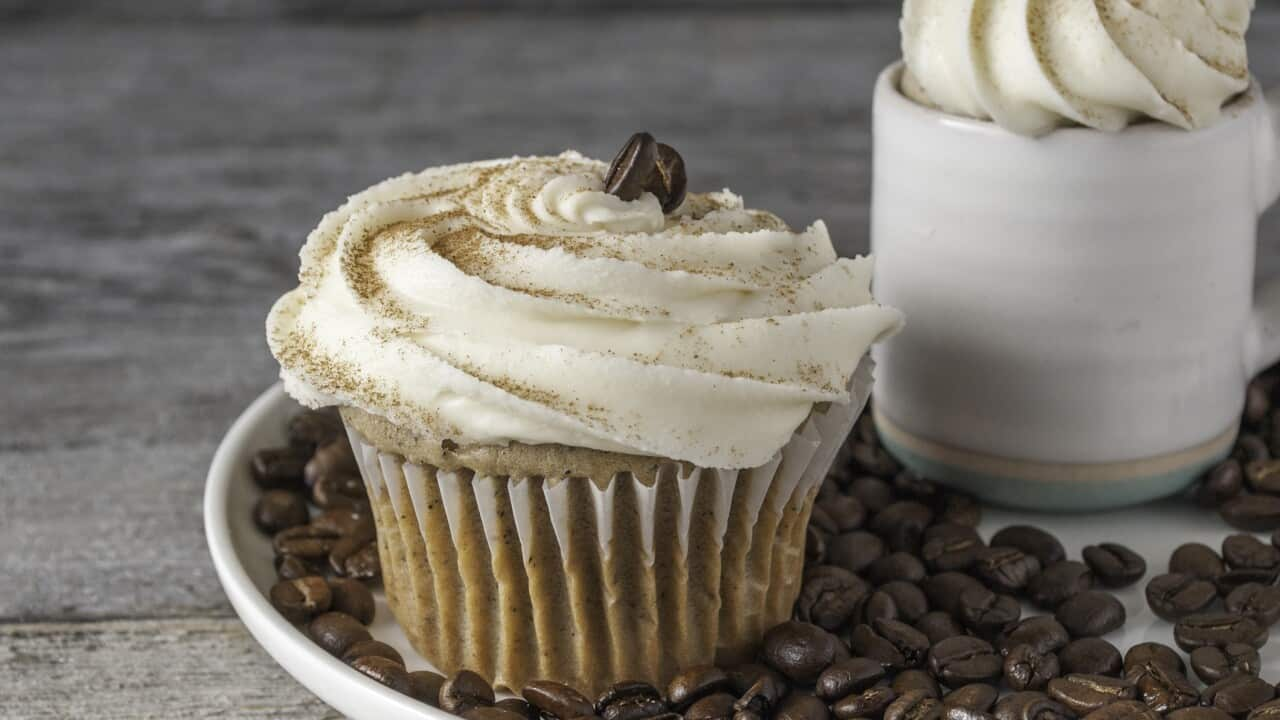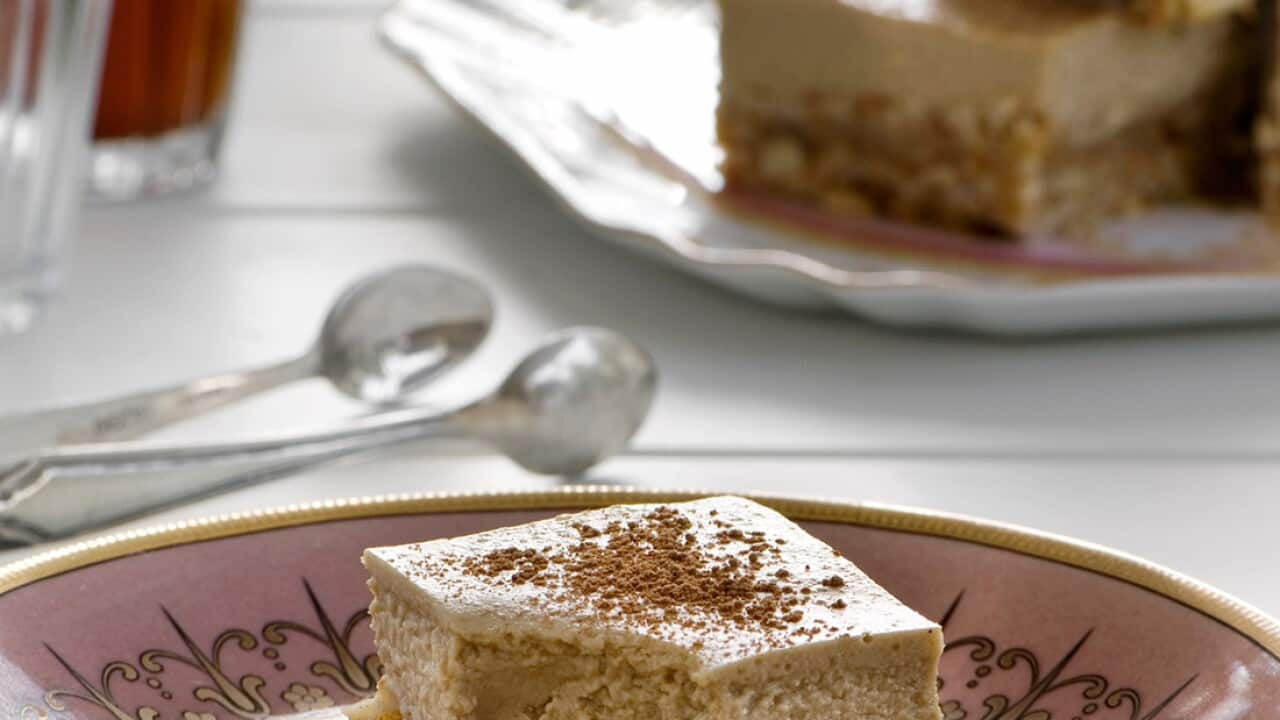Fewer beans, more coarsely ground, for a better, more consistent coffee? And a more eco-friendly cuppa, too? It’s the surprising result discovered by a team led by an Australian-American computational scientist, a UK mathematician and an Aussie barista.
The findings of the by the three coffee-lovers, along with other researchers from Ireland, Switzerland, the US and the UK, are published today in the journal Matter.
What the team found – after Melbourne barista Michael Cameron pulled thousands of shots of espresso, and the scientists crunched a lot of numbers – is that the secret to a coffee that consistently tastes great is using fewer coffee beans, ground more coarsely.
The coffee industry-standard, explains co-senior author Christopher Hendon (aka ), an Associate Professor and computational chemist at the University of Oregon in the US, is to use around 20 grams of finely ground coffee to make a shot. The idea is that by finely grinding the beans, more area is exposed to the water being pushed through by the coffee machine, and thus more of that magic coffee flavour and aroma are extracted. But the result can be unpredictable, and there’s a whole lot of coffee bean waste generated. When Hendon and Cameron were chatting in an on-line coffee forum four years ago, they had an idea for a small experiment to see if there was another way. It took a bit longer than expected, Cameron tells SBS Food. “Chris said, ‘Let's do like a little paper. It'll be really interesting, and a lot of fun and we should be able to do it in a couple of weeks.’ And that was 2016…”
When Hendon and Cameron were chatting in an on-line coffee forum four years ago, they had an idea for a small experiment to see if there was another way. It took a bit longer than expected, Cameron tells SBS Food. “Chris said, ‘Let's do like a little paper. It'll be really interesting, and a lot of fun and we should be able to do it in a couple of weeks.’ And that was 2016…”

Christopher Hendon loves the intersection of coffee and science Source: Christopher Hendon / University of Oregon
Associate Professor Hendon (he’s a double espresso man – “a trial and tribulation for a café”, he says when we chat to him down the line from Oregon) explains that the initial aim was just to develop a mathematical model to predict extraction rates – the fraction of the ground coffee that dissolves and ends up in your cup.
“From a material science perspective, the expectation is that if you grind finer, you're going to produce more surface area, so you should increase the amount of coffee that you can extract per shot. So that was the expectation and for the most part, it definitely is true. As you start to grind finer, your extractions go up and up and up,” Hendon says.
“The surprising result, actually, was that when Michael and I were working together, we identified our favourite tasting coffee of the bunch at a grind setting that was sufficiently fine that the espresso was behaving like most espressos do in Australia – 20 grams [of ground coffee] in, 40 grams of espresso out, and in 30 seconds, 40 seconds – but as we ground coarser from there, we noticed our extractions were going up. And that’s counterintuitive. It meant something was going wrong in terms of the way the water was contacting the coffee bed.” (If you'd like to read more about the physics of espresso extraction, and why inhomogeneous flow is operative at fine grind settings, resulting in poor reproducibility and wasted raw material, there's lots of details in the team's paper, Systematically Improving Espresso: Insights from Mathematical Modeling and Experiment, full text available .)
What Hendon, fellow co-senior author from the Department of Mathematics at the University of Portsmouth, Cameron and the others on the research team found was that reliably great-tasting shots could be produced by using less coffee and grinding it more coarsely.
And that’s good news for coffee drinkers, cafes and coffee growers too.
“It’s not just efficient, but also repeatable,” explains Cameron, who now works as communications manager at Melbourne speciality coffee pioneer . “So you may be able to get, using 20 grams of coffee, a really high-extraction shot of coffee, but then to pull that same shot again and again and again, what we found was that it's really variable, that you couldn't guarantee that you're going to get a consistent shot time after time.”
That’s not great news for any coffee maker, whether you’re a barista in a café or you’re making your own coffee at home.
“What we found with a lower dose at low pressure and a coarser grind setting, was we could reproduce that result each time. So, you got more predictability and you are saving coffee as well.
“That's the eco-friendly side of it – you can use less coffee and get the same result. Seventy per cent of global coffee production comes from what are known as smallholder farmers. We're really removed from this reality, that these smallholders, these farmers, they might have, like, two bags worth of coffee for their harvest for that year. So those two bags of coffee, it's their entire production for a year. And here we are using 20 grams of coffee at the other end and we're not even using it very well. There's a lot of hard work that's gone into those crops, so if we can efficiently and effectively use the coffee that they have produced for us, we're honouring their hard work.”
Cameron, with help from his wife Dechen Morisco, pulled thousands of shots while doing the practical side of the research. It's far from the first time Christopher Hendon has turned his academic focus on coffee - and it's not surprising the dual Australia-American citizen loves a good espresso, given he spent a big chunk of his life in coffee-loving Melbourne (he was born in the US, but moved to Australia when he was ten and did his undergraduate degree at Monash University).
It's far from the first time Christopher Hendon has turned his academic focus on coffee - and it's not surprising the dual Australia-American citizen loves a good espresso, given he spent a big chunk of his life in coffee-loving Melbourne (he was born in the US, but moved to Australia when he was ten and did his undergraduate degree at Monash University).

Barista Michael Cameron says the findings will help cafes and coffee growers Source: Michael Cameron
"In 2014, I was doing a PhD in the UK and I was a frequenting a cafe over there. The barista, Maxwell Colonna-Dashwood, was one of these types that was very interested in the science and took pride in their craft. And together we shared information, he taught me about the coffee industry and I taught him chemistry on the weekends. That led to an initial collaboration that was exploring the chemistry of water, and how it impacted coffee's flavour when they were brewing it, and we wrote a book called Water for Coffee." An experiment about grinding coffee followed – so after investigating water and grinding, "the intuitive thing to do next was brew some coffee. And that's where we are with this study – this is the culmination of half a decade of work, to get to brewing."
The results of the research have been put to the test.
"We implemented this procedure in a cafe here in Oregon," Hendon tells us."We reduced the amounts of coffee they were using from 20 grams per shot of espresso, down to 15. And over the two years that this has been operative in this cafe, we've noted that there's not been a single negative comment related to the quality of the espresso. In fact, many people have commented that it's improved since doing this.
"One primary outcome is that they use 25 per cent less coffee per shot, which ended up saving them something like $US4000 a year, simply by reducing the mass of the coffee. And the other thing that we noted was the shots started running a lot faster. So instead of using 35 seconds or 40 seconds to make an espresso, they can do it now in somewhere between 10 and 14." That makes a huge difference during the morning rush, he says.
The research has changed how Jamie Foster makes his coffee, too.
"I am an espresso man. I almost never use any milk or sugar. I am also an embarrassingly good likeness to the stereotype mathematician in that I drink rather a lot of coffee. I have a machine on my desk at work and it is well-used," he tells us. "After doing this work, I now more carefully weigh my coffee before loading it into the machine and have explored what tastes result from using different home grinders."
The researchers point out that they don't claim to have reduced coffee making to a single set of brewing conditions. "Though there are clear strategies to reduce waste and improve reproducibility, there is no obvious optimal espresso point," says Hendon. "There is a tremendous dependency on the preferences of the person producing the coffee."
And while this might seem like great news for cafes and coffee lovers, but perhaps not for coffee roasting businesses - in theory, less coffee used means less coffee sold - Hendon says he thinks it could be good news all round.
"If you have more people producing more reproducible coffee, it tastes good and you know what you're going to get if you go down to your local cafe." More consistently good coffee would mean more coffees sold, he suggests. "So in the end, roasters actually end up getting more accounts and selling more coffee - and there's a supply and demand, and the producers can fetch higher prices. Overall everything increases."








